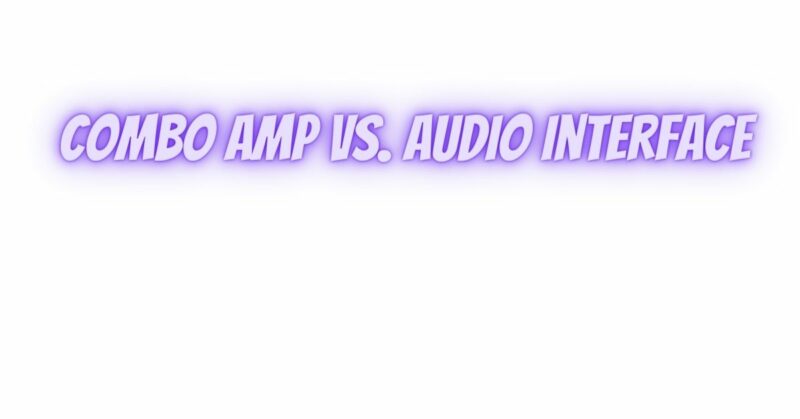As a guitarist looking to record your music, you’ll likely come across two primary options: using a combo amp or an audio interface. Each approach has its own advantages and serves different purposes in the recording process. In this article, we’ll explore the characteristics of both combo amps and audio interfaces to help you make an informed decision based on your recording requirements and preferences.
Combo Amp: All-in-One Amplification and Recording Solution
A combo amp is a self-contained unit that combines an amplifier and speakers in a single package. It is designed primarily for live performances and practice sessions, offering convenience and portability. However, many modern combo amps also include built-in recording capabilities, making them a viable option for recording guitar tracks directly into your DAW (Digital Audio Workstation).
Advantages of Using a Combo Amp for Recording:
- Simplicity: Combo amps with built-in recording features provide a straightforward solution for recording your guitar tracks without the need for additional equipment.
- Instant Sound: With a combo amp, you can easily dial in your desired tone using the amp’s controls, allowing for quick and effortless recording.
- Live Performance Compatibility: Combo amps can double as performance tools, making them versatile for both live gigs and home recording.
Audio Interface: The Versatile Recording Hub
An audio interface is a dedicated device that connects to your computer and serves as the bridge between your guitar and the digital realm of your DAW. It enables you to capture high-quality audio directly from your instrument, providing a wealth of recording possibilities and flexibility.
Advantages of Using an Audio Interface for Recording:
- High-Quality Recording: Audio interfaces are designed to deliver pristine audio quality, offering better signal processing and conversion compared to built-in recording features on some combo amps.
- Flexibility: An audio interface allows you to record not only your guitar but also other instruments and vocals, making it an essential tool for multi-track recordings and full-fledged music production.
- Access to Virtual Amplifiers and Effects: With an audio interface, you can use amp modeling software and virtual effects plugins within your DAW, granting you access to a vast array of tones and sonic possibilities.
Choosing the Right Tool for Your Needs
When deciding between a combo amp and an audio interface for recording, consider the following factors:
- Recording Scope: If you primarily want to record your guitar tracks and prefer a straightforward setup, a combo amp with recording capabilities might be sufficient. However, if you aim to produce professional-grade recordings with multiple instruments and a wider range of tones, an audio interface provides greater flexibility.
- Sound Quality: While many combo amps offer decent recording quality, an audio interface typically delivers higher fidelity and a more transparent signal path, especially when paired with quality microphone and preamp options.
- Versatility: If you anticipate expanding your recording endeavors to include more instruments and virtual effects, an audio interface will better cater to your evolving needs.
In summary, choosing between a combo amp and an audio interface for recording comes down to your recording goals, budget, and desired level of versatility. A combo amp with built-in recording capabilities is an excellent choice for simple and quick guitar tracking, especially for live performers who also want to record their performances. On the other hand, an audio interface provides a more robust recording solution with high-quality sound and the ability to expand your recording possibilities beyond just guitar tracks. Ultimately, the decision should be based on your specific needs as a guitarist and recording artist.


